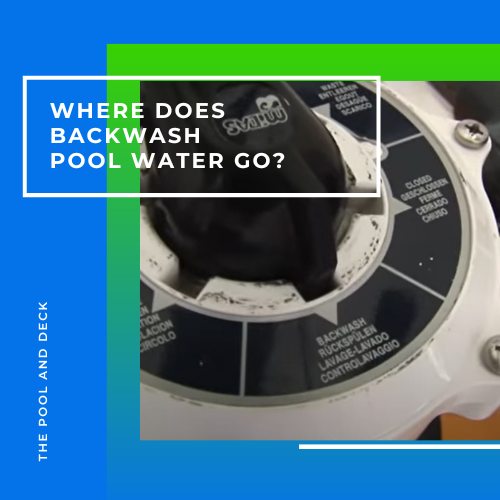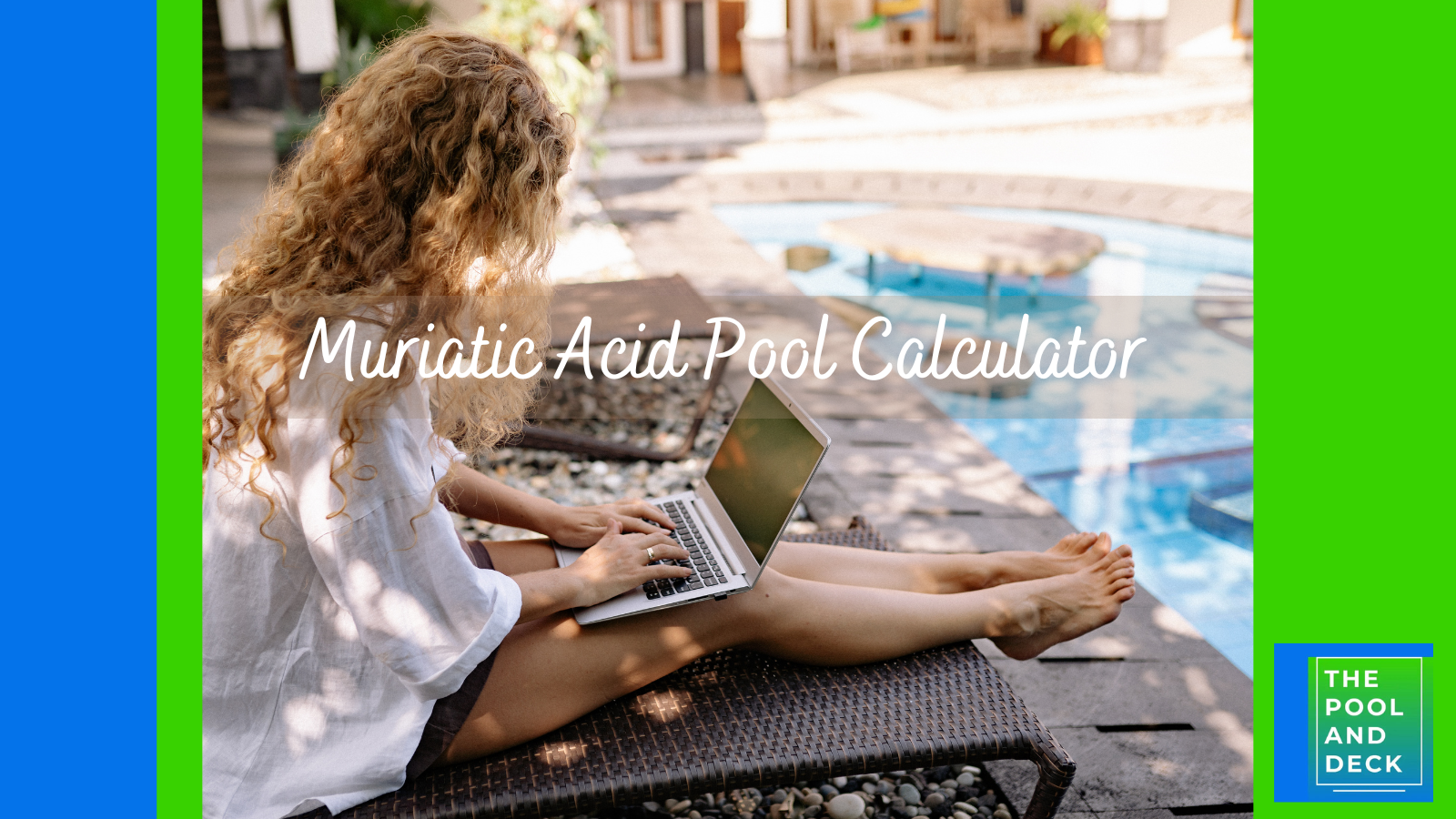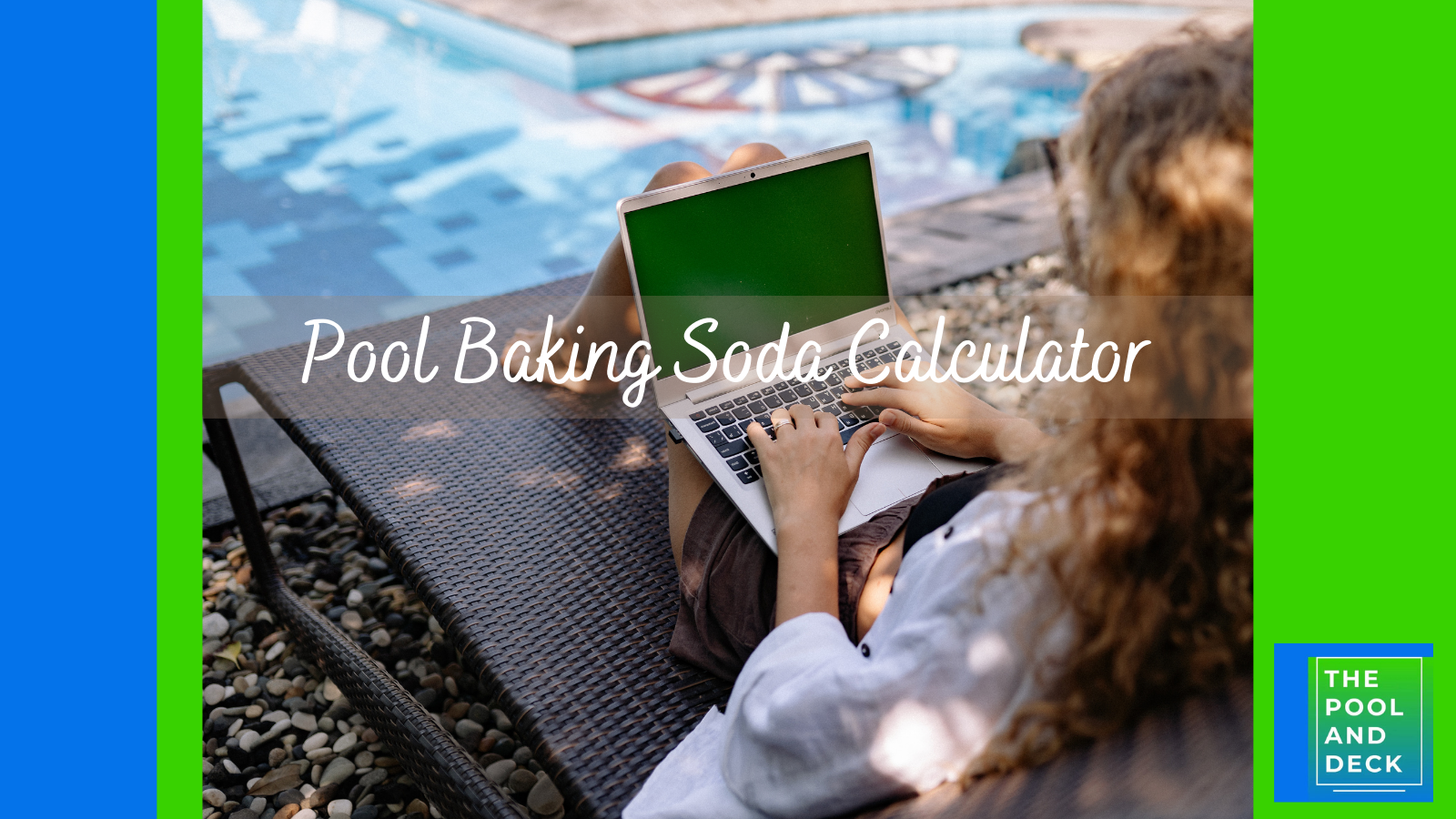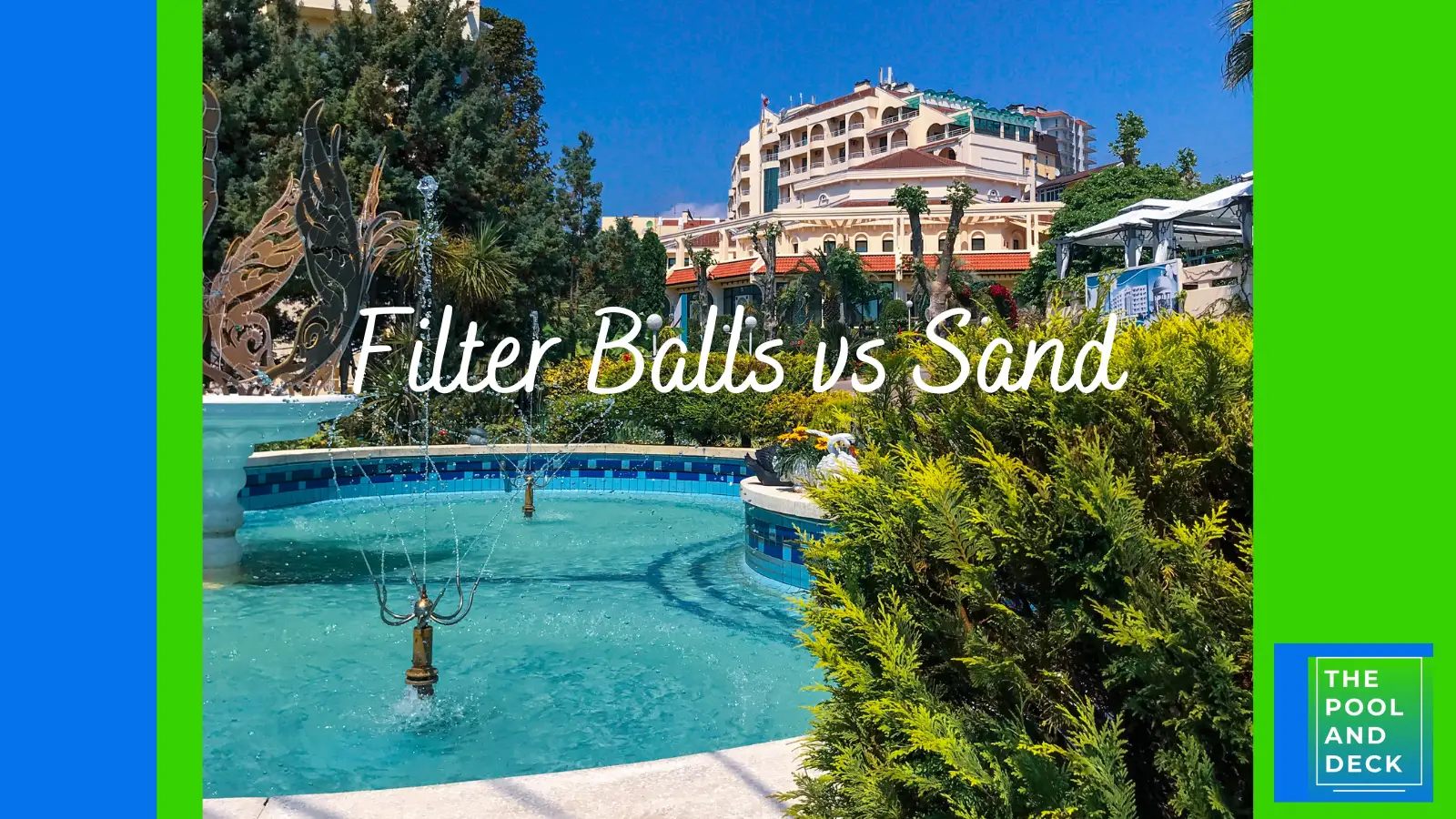2024 Pool Alkalinity Calculator: Free & Easy to Use!
thepoolanddeck.com is a participant in the Amazon Services LLC Associates Program, an affiliate advertising program designed to provide a means for sites to earn advertising fees by advertising and linking to Amazon.com . The website is also an affiliate of a few other brands. The affiliate links never increase your purchase price. We do appreciate your support. Thank you very much!
Table of Contents
Pool Alkalinity Calculator
Please feel free to use the Pool Alkalinity Calculator below.

Enter the Existing Total Alkalinity (TA) Level and the Pool Water Volume (Gallons) to get the Amount of Baking Soda to be added in (oz) to bring the TA Level to a healthy 100 ppm. (The calculator assumes a pH of 7.5)
Pool Alkalinity Calculator
NOTE: If Total Alkalinity (TA) is between 100 – 120 ppm, you do not need to take any action. However, if Total Alkalinity (TA) is greater than 120, bring down the pool pH to between 7.0 and 7.2 and then aerate the pool to gradually reduce the alkalinity below 120 ppm
You can use my Muriatic Acid Pool Calculator to help you figure out the right dose.
The Importance of Total Alkalinity (TA) in Your Pool
Total Alkalinity, often known as TA, measures the presence of carbonates and similar chemicals in your pool water. Carbonates, such as limestone and chalk powder (calcium carbonate), are common examples.
TA acts as a buffer for pH, stabilizing fluctuations. Unlike pH, which is measured on a scale, TA is gauged in ppm (parts per million).
Maintaining the right TA level is crucial. Low TA can lead to erratic pH swings, while high TA may cause pH to rise, resulting in cloudy water and scaling issues.
Ideal pH and TA Levels for Your Pool
The recommended pH range for a pool typically falls between 7.2 and 7.8. This range ensures swimmer safety, enhances chlorine effectiveness, and promotes a clean pool. Ideally, aim for pH levels between 7.4 and 7.6.
For TA, the ideal range is usually between 80 and 120 ppm. Staying within this range helps stabilize pH and prevents water balance problems.
When adjusting TA, target 100 ppm for optimal balance.
Using Baking Soda to Increase TA
Both Baking Soda and Soda Ash can raise TA levels in a pool. However, Baking Soda increases alkalinity without impacting pH, whereas Soda Ash affects both alkalinity and pH.
You can raise total alkalinity of your pool either by adding baking soda or soda ash. Generally speaking Baking Soda is a better option, unless the pH is very low too!
Best Baking Soda
America’s #1 Baking Soda Brand. Raises the total alkalinity level to ensure healthy swimming pool water. Helps prolong the life of pool surfaces and equipment.
How to Use Baking Soda to Raise Total Alkalinity
Here is the 5 step process:
Test Your Pool Water:
- Use a pool testing kit to measure the alkalinity level, aiming for a range of 80 to 120 ppm. Target a total alkalinity (TA) level of 100 ppm for optimal balance.
Calculate Baking Soda Amount:
- Determine the required amount of baking soda based on your pool size and current alkalinity level. Use the pool alkalinity calculator above.
Add Baking Soda to Pool:
- Disperse the calculated amount of baking soda evenly across the pool surface, avoiding direct pouring into the skimmer.
Allow Time for Action:
- Run the pool pump to distribute the baking soda thoroughly. Wait 6 to 24 hours for the baking soda to take effect, refraining from adding other chemicals during this period.
Retest Pool Water:
- After 6 to 24 hours, retest the pool water to assess the alkalinity level. If it remains low, repeat the process as needed to achieve the desired TA level.
Do you need access to all my Pool Chemical Calculators? Just click the button below:
Thank you very much for reading the post. I do hope you found it informative and helpful.







